#Urbis
Explore tagged Tumblr posts
Text
Pro Cultura Urbis-díj: DJ, művészeti menedzser és filmrendező kapja a fővárosi kultúra értékeinek gazdagításáért
Pro Cultura Urbis-díj: DJ, művészeti menedzser és filmrendező kapja a fővárosi kultúra értékeinek gazdagításáért
Rozgonyi-Kulcsár Viktória kulturális menedzser, Palotai Zsolt, magyar underground DJ, valamint Papp Gábor Zsigmond Balázs Béla-díjas magyar filmrendező, producer kapják idén a Pro Cultura Urbis-díjat. A díjátadó ünnepséget 2023. november 18-án 15 órakor tartották a 12 év után újra nyitó Merlinben. Budapest egyesítésének 150. évfordulójára, Budapest születésnapjára újra életet lehelt Budapest…

View On WordPress
0 notes
Text



THE URBZ: SIMS IN THE CITY | TEASER
#the sims#sims#the urbz sims in the city#urbz#the urbz#gif#gif set#jayde#jayde urbie#mazuiko jackson#skid mark#my edits#2000s#ea#electronic arts
301 notes
·
View notes
Text

Painted my fist mini in preparation for the Urbie Durby at PortCon Maine later this month
98 notes
·
View notes
Text

Indosylvirana urbis, Urban Golden-backed Frog, is a species of frog known only in the southern Western Ghats from Ernakulam, Malappuram, and Thrissur districts in Kerala.
181 notes
·
View notes
Text
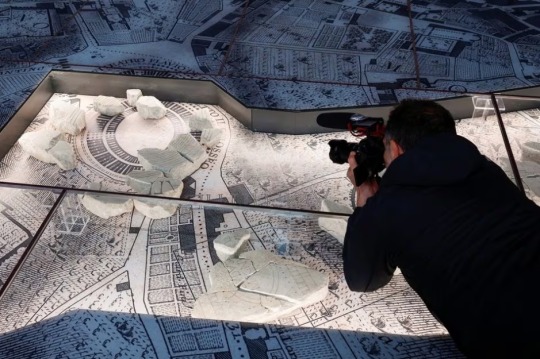
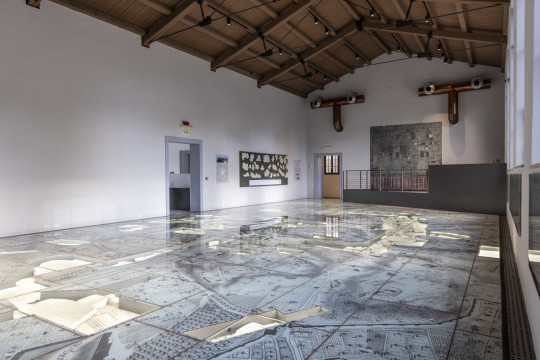
Ancient Monumental Marble Map of Rome on Display After 100 Years
A marble map of ancient Rome, that hasn't been put on public view for almost 100 years, is getting its very own museum within sight of the Colosseum.
The Museum of the Forma Urbis, enclosed within a new archaeological park on one of Rome's famous seven hills opens on Friday -- the latest offering from a city that is eager to broaden its attraction for growing hordes of tourists, according to Reuters.
"This is a beautiful day. We are opening an archaeological park in an extraordinary part of the city and a new museum showcasing a masterpiece which has not been visible for about a century," said Rome Mayor Roberto Gualtieri.
"We want a city where the museums and the streets are linked, and where people, while walking around, can fully appreciate and enjoy the beauty, but also better understand how our city has been transformed."
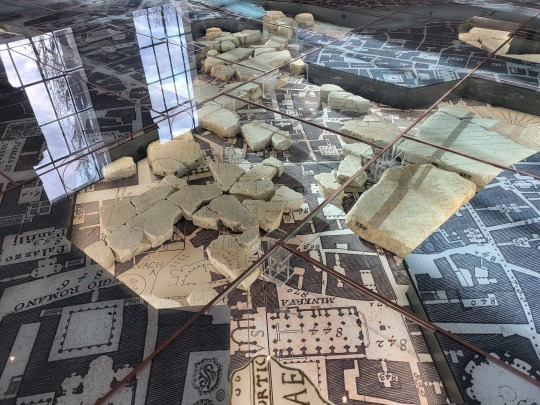

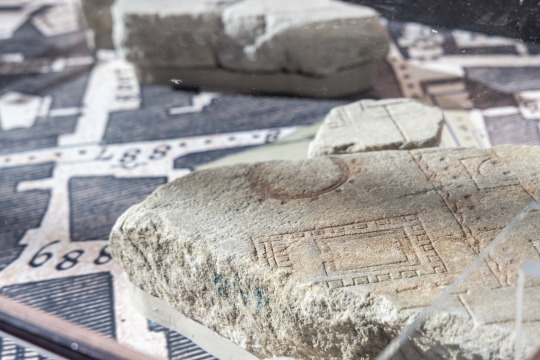
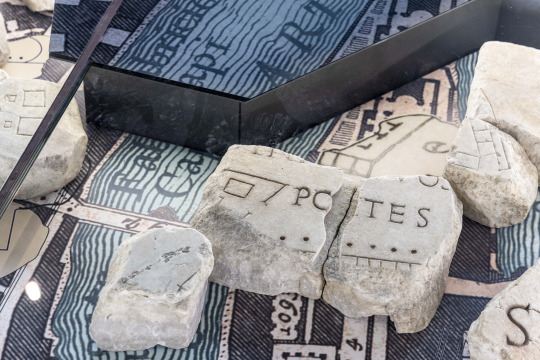
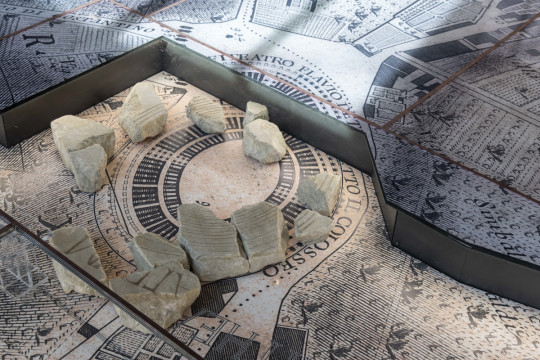
The Forma Urbis was a monumental, highly detailed marble map of ancient Rome carved during the reign of the Emperor Septimius Severus between 203 and 211 AD, engraved onto 150 separate slabs and measuring 18 by 13 metres (60 by 43 feet).
It was displayed on a wall in the ancient city, but over the centuries it gradually disintegrated, with locals using some slabs for new buildings.
During excavations in 1562, fragments were recovered and scholars estimate around 10% of the whole has survived, including sections showing the Colosseum and Circus Maximus, as well as floor plans of baths, temples and private houses.
The huge carving has proved a valuable resource for understanding the layout of ancient Rome, but all the remaining pieces have not been shown together since 1924.
In its new, innovative setting, the fragments have been laid out on a reproduction of a famous map of Rome created in the 18th century by the surveyor Giovanni Battista Nolli, who is credited with making the first accurate street plan of Rome.
The marble chunks lie on top of the Nolli map, showing their relation to the developing Renaissance city.


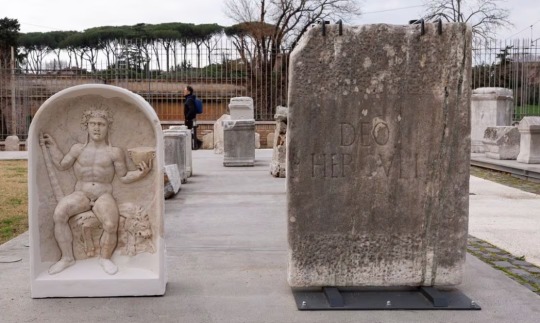

Outside the museum, in the open-air park on the side of the Caelian Hill, archaeologists have out laid out walkways lined with ancient Roman grave markers and marble columns found in excavations around the city in recent decades.
"The Caelian Hill, one of the seven hills of ancient Rome, has remained in the shadows, unknown and inaccessible for a very long time. Today, we are finally giving it back to the city," said Claudio Parisi Presicce, who oversees Rome's cultural heritage.
"The hill has a special importance because it is what unites the monumental area of the Imperial Forums, the Roman forum, the Colosseum and the area of the Appia Antica," he said.
The 5-million-euro ($5.5 million) project is part of a broader refurbishment of Rome, which has seen a tourism boom since the end of the COVID-19 pandemic and is expected to be submerged by visitors in the 2025 Roman Catholic Holy Year.
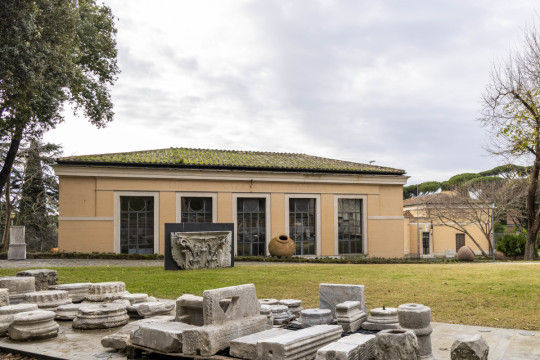
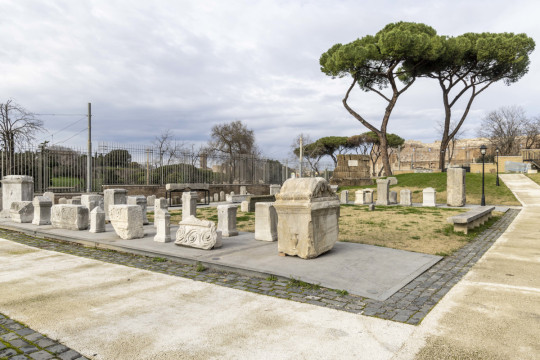
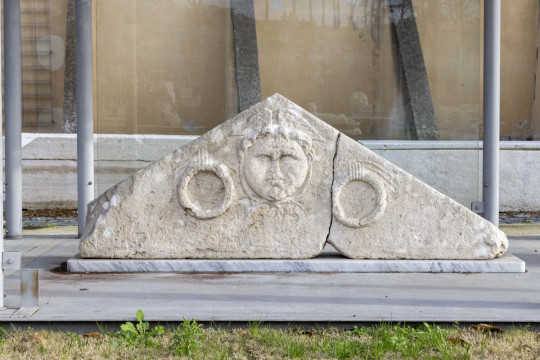

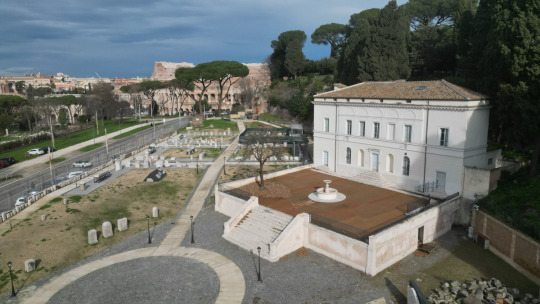
#Ancient Monumental Marble Map of Rome on Display After 100 Years#The Museum of the Forma Urbis#The Forma Urbis#Emperor Septimius Severus#ancient artifacts#archeology#archeolgst#history#history news#ancient history#ancient culture#ancient civilizations#ancient rome#roman history#roman empire#roman emperor#roman art
164 notes
·
View notes
Text
Urbanmechs and Panthers will bap a mech it likes with the dominant large ordinance on its arm. This is a display of trust and affection between mechs.
#mechwarrior#battletech#for reference i saw like 3 posts about *baps you with my paws* so i felt i had to make this post#also little urby doodle in a bit :>
43 notes
·
View notes
Note
Two questions regarding the Wardi religion:
In addition to the bull and the lioness, what are the seven faces of god/sacrificial animals?
Given that white animals seem to be sacred, does that influence how albino humans/other sophents are treated by society?
The seven faces of God are as follows:
-the lunar, horned, or 'wild ox' face of God, which presides over the moons, and the fertility of the land, animals, and people. In pre-imperial times, this was functionally the most central face of God (replaced by the lion face/odomache). The most ideal sacrifice is a wild ox (especially white or albino) that has never been bred. -the ‘ox’ face of God, presides over agriculture and labor, as well as the domestic sphere. The most ideal sacrifice is a healthy plow oxen or khait who has never been yoked or bred (if the sacrifice is towards Ox-Face as the domestic sphere, this should be a heifer). -the lion face of God, presides over sovereignty, statehood, military might, and is most associated with the health and continuing existence of the imperial entity. The most ideal sacrifice is a maned lioness (functionally white, though this is a trait of the captive population). -the ocean or skimmer face of God, presides over the seas, winds, as well as fortune and mercantilism. The ideal sacrifice is the skimmer gull or an albatross, especially one taken from one of the sacred rocks in the 'mouth' of the Viper sea. -the serpent face of God, presides over the cosmos and divine Mysteries, associated with funerary rites and death. Also has a wildly disparate association with royalty (which is derived from entirely separate traditions and has not yet fully been reconciled into the faith). The ideal sacrifice is a two headed or melanistic snake, especially a venomous one (both would be MOST ideal, but this is rare beyond any practicality) -The solar face of God, presides over the sun, stars, and fire, also heavily associated with khait and mounted warriors. (this is a VERY direct import from the chief solar god in the Burri pantheon (who rides and/or is a khait with the sun between its horns), hence the seemingly random khait association). The ideal sacrifice is a healthy riding khait (especially with a white spotted coat), or alternatively a golden eagle. -The river face of God, presides over fresh water, seasonal flooding, and the rains. The ideal sacrifice is the migratory reed duck (which arrives at the onset of the wet season) or a freshwater hesperornis (ideally taken from one of the sacred waters). An-Nechoi are also occasionally given.
Though the core religion is monotheistic, each face of God is functionally a syncretic fusion of older ethnic Wardi beliefs, the Burri pantheon, and other regionally native traditions, which have not all been fully reconciled (the process of fusion is more or less still ongoing). Each face in of itself has dozens or more epithets with distinct features. For example, the river face has a specific epithet for each major riverway, each venerated as a distinct aspect of the Godhead. Functionally, common practice of the Wardi faith is pretty indistinguishable from polytheism, and most of the religious authority does not care as long as required orthopraxy is maintained (the central dogma of the religion does not care How you believe, but that the correct practices are enacted).
Also for reference, these are the specific animals taken on the pilgrimage in the story (transporting seven rare animals cross country can be fraught, so each had at least a few backups):
A pure white aurochs calf, found naturally born in a wild herd.
A massive, unbred and unyoked bull draft khait (dies en route, replaced by a less physically impressive backup with the same qualities)
A lioness with a full mane, from the white captive stock
A skimmer gull taken from a nest on the sacred rock in the waters of Od-Koto.
A baby two headed cobra (which dies en-route and is replaced with its backup, a melanistic viper)
A beautiful speckled riding khait mare whose horns form a near perfect circle (which is stolen en-route and replaced with its sister)
A rare wild hesperornis (haven't come up with an in-universe name yet) taken from the reeds of the Brilla river delta.
Anyway the sacrifices listed above are considered the absolute IDEALS when working with a specific face, but a great variety of animals will be sacrificed to various ends. There’s some very specific cultural/religious components to which animals are most valued, but in practice the value of a sacrifice is pretty close to 1:1 with the animal’s monetary value, at an intersection of utility and rarity.
So a young, healthy bull plow oxen who has never been bred or yoked is a more valued sacrifice than an old, experienced plow ox who has already sired offspring. You are giving up an extremely valuable animal and all its unused potential in a very practical sense, which makes the sacrifice more potent and valued. The 'virginal' status of the animal is key when the rite is SPECIFICALLY related to fertility, in the sense that the animal itself is sacrificing its unused fertility, allowing for the sacrifice-rebirth cycle to perpetuate. (Animals which Have been bred may be preferred in certain cases and rituals).
An animal with a rare coloration is usually going to be more valuable than one with more common genetics. This is the core root of why albino animals are of high value. It's less that white animals themselves are valued, just that rare genetics such as albinism = valuable sacrifice.
There are some specific exceptions where the color itself is significant (rather than just an extension of its rarity). God is specifically supposed to have taken the form of a white aurochs (itself emerged from the foam of the sea) during creation, so white oxen and wild oxen SPECIFICALLY have especially high value. Melanism or black scales are valued to the serpent face of God, which is associated with the cosmos and void behind the stars. (this stems from much, MUCH older beliefs in a cosmic serpent god in the region).
Animal sacrifice is a very significant part of the religious framework and involved in most rituals and prayers intended to affect significant change and transformation. (This is due in part to a deeply ingrained belief in the world being perpetually sustained in a cycle of sacrifice and rebirth, and in God Itself being the physical mechanism of rebirth and requiring sacrifice to be sustained). While blood itself is seen as potent, the nature of sacrifice isn't just 'spill blood and make thing happen', it's got a self contained value system and is very calculated and intentional in nature. You aren’t going to just grab a random rat and bleed it and pray, there needs to be a perceived ‘loss’. Sacrifice via killing is also not the only form, the most common day to day sacrifice is in (very minor) bloodletting and offerings of food and drink- the key is allowing a personal loss to sustain a greater cycle.
That being said, there is a HUGE trade system built up around the breeding and selling of animals solely for sacrifice. The industry revolves mostly around birds (doves are the cheapest, but also poultry, waterfowl, some birds of prey, a few select songbirds and ornamental birds), goats, sheep, and horses (the small, premodern kind). Cattle and camelids are a higher tier, and khait are among the highest of common sacrifices due to their great value.
Other animals that have no direct utility but are sacred are also bred or captured for sacrifice (hesperornis, lacetor, gulls and albatrosses, several kinds of snake, a bunch of wild ungulates, nechoi, etc). Some '''‘exotic’''' animals are imported specifically for this purpose, mostly as a means of displaying the wealth and reach of the state, with their sacrificial value rooted in the difficulty of acquisition. Animals taken from sacred sites are also prime candidates (ie cattle bred and grazed on the foothills of the Sons of Creation are VERY valuable).
---
So all that being said the importance of albino animals has come off a little overstated on my part, and doesn't have any particular impact on how albinism in people is regarded. It’s valued mainly for its rarity in the context of animal sacrifice, which would not have direct translations to how it’s perceived in people.
Albinism in people doesn’t have a super well defined significance in broader Imperial Wardi culture, but perspectives mostly skew negative and towards seeing it as a sign of ill fortune (physical differences in people tend to be seen as a result of being cursed in the womb). Imperial Wardin is culturally diverse (united mostly by a identity based in shared religion), so exact nuances would vary and this statement should not be taken as a universal.
Imperial Wardi population is mostly human (with its citizen population being MAYBE 5% elowey, 2% qilik, and a decimal point of caelin). Overall sentiment towards other sophonts by the human majority is not outright hostile, but is human-centric and tinged with xenophobia (as most qilik and elowey in the region are immigrants, with the only elowey ethnic group historically inhabiting the region (the Jazait) being regarded as 'heathens'). Albino elowey or qilik might be similarly seen as products of a curse, or may be given a 'wow how beautiful' treatment (in a heavily patronizing capacity) and seen as a curiosity, or otherwise just subject to varying perspectives on albinism in the region.
The one other thing I have established in this vein is that the semi-mythological hero Janise (sworn brother of other semi-mythological founder hero Erub) is said to have been albino. While he is positively regarded, he is supposed to have died young of a snakebite (assumed to be the product of a curse from his enemies) and this would not improve perceptions of albinism being related to ill fortune.
#For a while I was typing aurochs as aurox. And this WAS intentional but I don't know what the point was because neither word would#be used in-universe (it's just translated as 'wild ox' in text) and it's not indicating a distinction with a real animal (like 'tyger' is).#So yeah it's back to just 'aurochs'.#Also Janeys is named after the historical Janise ('Janeys' is a more contemporary variant and is also a SUPER common name)#(variants include Janis Janes Jannes Janey Jani Jane Janus.....etc)#There's also like 10 trillion people named Erub or Erubi or Erubin or Erubnos or Urib or Urbi or Urbin .. etc#Super committed to realism by having several characters in the same story with the same name. There's like 4 background#characters with Erub names and 2 other Janeys variants. Which is hard on the reader and kind of bad writing but suffer with me. etc.#None of this is related to core post questions I just can't not elaborate on various niche details#OH ONE SEMI RELEVANT THING. Hesperornis is not extinct in this setting but only freshwater species survive in the contemporary#They don't get as big as the marine species we know from Real Life but they're still pretty big and flightless and only live in#large healthy river in this region (therefore are increasingly diminished) and are considered sacred#I got a couple drawings on deck that involve them but I don't think they've come up on here before#the white calf#imperial wardin
59 notes
·
View notes
Text




gooberness :]]
Mochi (she/her) has a redesign! yippee :]
The Panopticon (it/its) the obligatory eyefestation scug! It is NOT doing ok and has weird eye rot and it desperately needs therapy
Urbie (they/them, it/its), a puddle of void-mass that explorer found and took home to rain world lol
Color concept for Fifth Act! Finally :]]
#raintailed's art#rain world#rw#rain world oc#pressure#pressure oc#my ocs#mochi (oc)#river / the panopticon (oc)#urbie (oc)#fifth act (oc)#reference#explorer found urbie inside of a drawer so it's small#tw body horror#ALSO panopticon's colors are based on poobssure's art of eyefestation! it is very nice
30 notes
·
View notes
Text
This is a stupidly deep cut wrt chances of other people with fandom cross over but
Sam Vimes is the Vox Populi and Moist von Lipwig is the Vox Phantasma
#samuel vimes#moist von lipwig#discworld#dimension 20#unsleeping city#idk what the patrician would be#Vox Urbis?
87 notes
·
View notes
Text

UrbieG Trombone // 15 FPS
#trombone#Urbie Green#inspiration#tribute#motion#loop#gif animation#target#hypnotic#circle#geometry#op art#gif art#animation#visuals#design#retro
47 notes
·
View notes
Text
my first in-person game of BattleTech went well, in terms of fun
in terms of my actual playing...eh? I deliberately went in with a sub-par 'Mech, used questionable tactics because they were fun, and I scratched the paint on the "final raid boss" ED-209 Turkina with a store-provided Hatchetman's axe, so whatever, man
27 notes
·
View notes
Text




Billboards in The Urbz
49 notes
·
View notes
Text

PortConMaine 2024's Urbie Durby



This year's Urbie Durby was an absolute blast! It continues to be one of my favorite parts of PortCon. I just love seeing these trashcans trying their best to destroy one another. I'm looking forward to the next one!
Highlights included:
Two Urbies simultaneously killing each other by having their ammo bins blow up.
My mech falling flat on it's face.
Everyone else's mechs also falling down for various reasons.
Getting kicked while you're down.
Death From Above!
And some friendly banter throughout
52 notes
·
View notes
Text
Catgirl Urbies. Just waiting for the ears to dry out before I paint em. Enjoy.

15 notes
·
View notes
Text
so i tried my hand at creating a locust with a LB 2-X AC, and starting from the 1E, it turns out it like wasnt hard like at all. just give it a clan XL engine and strip the other weapons, and it frees up 6 ton to use for the weapon and a single ton of ammo. it was a bit boring so i added an endo steel and cut half a ton of armour to give it a trio of jumpjets. i figure mobility will help it survive more than armour ever will. did leave me with an extra point of armour to add to the head tho. i figure that since the cannon is mounted in the torso, we can just not both putting arms on it. like, they aint needed its fine. oh yeah and upgraded its single heat sinks to double because why the hell not. maybe they will take a hit somehwere instead of something important like the ammo or the engine. but, i wanted to get silly...

SO I TRIED TO PUT A SECOND LB 2-X AC!!!!!
i stripped it down to half a ton of armour, ripped out those jump jets i gave it, made the XL engine just a touch smaller, and took away all those nice jump jets id given it, to create my ultimate war machine! sure, its as sturdy as a wet tissue and is going to evaporate the moment another mech so much as looks at it, but damn if it isnt going to be just kinda irritating the whole time. like, not actually an issue but you kinda wish it would go away

#battletech#my stuff#ok if i get another locust one day i may try and kitbash the first one its kinda fun#wait i think i actually have a lance worth of silly nonsense mechs that ive made now#yeah a highlander jenner urbie and now this fine lady#and only two of them were designed to actually be practical xD#ok maybe not cost wise but i like to pretend money isnt real and fill IS shells with clantech sue me
13 notes
·
View notes
